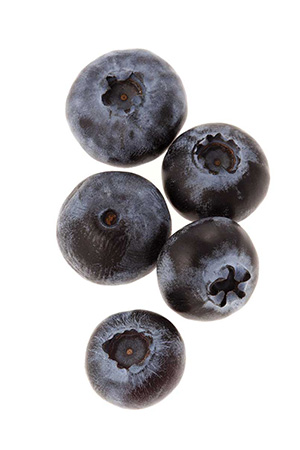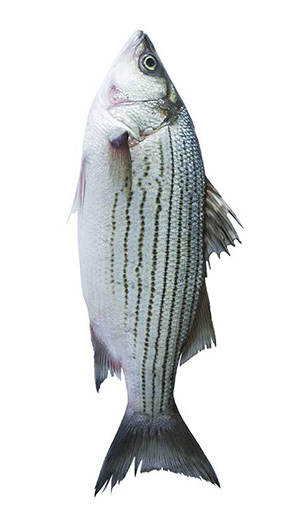This feature first appeared in the Fall 2015 edition of .
Getting food from the field to your plate can be a complex undertaking. Faculty, staff, researchers and students in Dal’s Faculty of Agriculture are studying what we eat, how we produce it and why we choose what we do. This work is helping improve today’s farming and processing methods, as well as educating the food policy makers and scientists of tomorrow.
IN THE FIELD
 Being precise about pesticides
Being precise about pesticides
A pesticide sprayer sweeps through a field of blueberries. But instead of delivering an even spray across the crop, it‚Äôs stopping and starting, spitting and spraying in what looks like an erratic pattern. At first glance, you might think it‚Äôs malfunctioning. But in fact, high-tech cameras and computerized controllers are directing the sprayer to apply precisely ‚ÄĒ and only ‚ÄĒ¬†what is needed. It senses weeds or plants that need to be sprayed with herbicide, fungicide or insecticide, and leaves the rest untouched, reducing the amount of agrochemical used on the crop. It‚Äôs called an automated prototype variable rate (VR) sprayer, and it‚Äôs a project of Qamar Zaman and his team, a recently patented technology that could help make the use of uniformly applied agrochemicals on crops a thing of the past.
Dr. Zaman is an associate professor and precision agriculture research chair in the Faculty of Agriculture. Precision agriculture is a concept of farming that accounts for the variability in crops, responding to soil variation, yield variation and field variation, among many other things. As one of the pioneers in the field, Dr. Zaman‚Äôs research is focused on precision agriculture in wild blueberries. He has contributed to research on increasing the berry yield and developing new ways for growers to reduce the use of agrochemicals and protect the environment. ‚ÄúPrecision agriculture technologies can also decrease the cost of production,‚ÄĚ Dr. Zaman explains. ‚ÄúWe just have to have the proper equipment, machinery that is equipped with controllers and sensors.‚ÄĚ
Dr. Zaman and his team of researchers have about eight projects on the go designed to help improve and maintain the wild blueberry industry, including the VR sprayer, currently in its final phases of testing. With its success, Dr. Zaman is looking to extend his research beyond the wild blueberry industry. Variability in fields can be found in many agricultural crops including cabbage, cauliflower and potatoes and the technology could be adapted to them. ‚ÄúIt worked very well [for wild blueberries] so next we will look at more applications that can be applied to other fruits and vegetables.‚ÄĚ
Fishing for success
Jim Duston peers into an enclosure of fish, his green waterproof lab coat keeping him dry, as the creatures spin and swirl just below the surface. The grey and silver-scaled fish, most between two and three feet long, are striped bass, and Dr. Duston thinks that these 10- to 30-pounders could be the key to revitalizing Nova Scotia’s fishing industry, an industry he says is over-reliant on Atlantic salmon and trout. He and his research team are looking at ways to diversify the industry.
Striped bass is in high demand in American restaurants. The species‚Äô high quality white meat is a customer-pleaser, but with the collapse of the wild population in the 1980s due to over fishing, there is now strict quota on wild striped bass. And although the population is recovering, small wild fisheries cannot support the demand for the product. ‚ÄúThis leaves an opportunity for farmed fish,‚ÄĚ Dr. Duston explains.¬† Aquaculture, or fish farming, is expanding worldwide faster than any other animal production system and accounts for well over 50 per cent of the seafood consumed globally.¬†
Dr. Duston‚Äôs research is looking at how to effectively and efficiently farm striped bass. He began his research in the late 1990s by retrieving eggs from the Stewiacke River. The fish grew to adult size, which takes about six years, and then became the ‚Äėbroodstock‚Äô which produce the eggs and milt (seminal fluid) for the cultured fish. Striped bass are challenging to grow, especially from eggs and into the early larval stages. Dr. Duston is looking at tank-based experiments to gain insight into the ecophysiology of the fish ‚ÄĒ how it adapts to its environmental conditions‚ÄĒand is also conducting field survey work in the Shubenacadie River, studying striped bass nursery habitats. ‚ÄúIt‚Äôs important we learn more about the factors affecting survival and growth,‚ÄĚ Dr. Duston explains. His goal? To make striped bass a commercially farmed fish in the region.
Building better eggs
Derek Anderson’s research team examines the quality and composition of eggs produced by hens fed marine byproducts and plant oils. Their challenge? Figuring out a way to elevate the healthy fatty acid profile of eggs to benefit of the overall heart health of those who eat the eggs.
‚ÄúWe‚Äôve tried to enhance eggs through the consumption of lobster and crab meal but the eggs may have a bit of a fishy taste which would not be palatable to all consumers,‚ÄĚ explains Dr. Anderson, whose team also includes Janice MacIsaac and Ming Gong.¬†Flax seed oil had been considered an option, but it isn‚Äôt stable enough to maintain good quality‚ÄĒand the hens simply don‚Äôt like the taste of it. ‚ÄúThat makes it difficult to get enough flax in the bird to elevate their levels of Omega-3 fatty acids,‚ÄĚ Dr. Anderson says.
Next up? ‚ÄúWe‚Äôre now looking at canola and camelina oil as alternatives to flax because we think they have more stable oils, have a good profile of fatty acids and the oil itself will not be difficult to feed to hens.‚ÄĚ
IN THE CLASSROOM
 Growing better policymakers
Growing better policymakers
Kathleen Kevany is trying to get the students in her Systems Rethinking course to consider how decisions about agriculture get made ‚ÄĒ and how those decisions can contribute to good environmental, health, economic and social policy.
Subtitled ‚ÄúReal-World Problems Linking Agriculture, Food and Well-Being,‚ÄĚ the course engages students in critical thinking on the importance of systems theory and interrelationships. For instance, in one case study, students¬†examine the potato from every angle. What is happening to the body when eating potatoes? What about the soil it grows in? What of the economic, social and historical implications of this revered vegetable? Dr. Kevany and her team hope the course will equip her students to become the kinds of professionals ‚ÄĒ policymakers, agrologists and agronomists, educators, clinicians ‚ÄĒ who know how to think strategically and systemically and are able to contribute policies for the betterment of the industry and human and environmental well-being.
This innovative course is team taught, interdisciplinary and case-based and allows learners access to the perspectives and experience of faculty members from all departments on the Agricultural Campus.¬† Each faculty member is involved in conducting research in some area related to agriculture, food and wellness including Dr. Kevany, who is researching factors that mediate individual and community well-being. ‚ÄúFor example, what do we discover when we examine the impact of our policies?‚ÄĚ Dr. Kevany explains. ‚ÄúWhat if we said you could have good agricultural policy but not good environmental, economic and health policy? Would we want to trade off anything here? How can we ensure that policy and practice in one area also adds value and does not contribute harm to other areas of human life?‚ÄĚ
Getting smarter about markets
It might look like a jet-setter’s itinerary: stops in Iceland, Nova Scotia, the Netherlands and other spots in North America and Europe. But in fact, it’s the study tour of students in Dal’s International Food Business (IFB) program.
Agriculture is more than just growing food. The IFB program teaches students to understand the business side of food production, and how it can be more profitable, more market focused, more efficient in operations and more responsive to changing policies and trends. Through the program, students gain an international perspective by completing an orientation and study tour to Iceland, two work placements (one in Europe and one in North America), and then a second year of study in the Netherlands at partner institution, CAH Vilentum.
‚ÄúModern food production systems in developed countries, such as Canada, are more and more focused on niche, high-value export markets,‚ÄĚ explains Simon Somogyi of the Department of Business and Social Sciences. ‚ÄúThe IFB program instills in students the idea of developing food products for high value export markets and equips them with the knowledge and skills to do just that.‚ÄĚ
IN THE SUPERMARKET
Peering inside consumers’ heads
Why do you buy the food you buy? What helps you make your food choices? Faculty of Agriculture researchers are probing the influences on your buying choices to help growers and agribusinesses do a better job of enticing you to buy their products.   
Dr. Simon Somogyi focuses his research on agribusiness marketing and looks at linking growers and their products with specific high value markets. ‚ÄúMy research is about increasing agribusiness income throughout the chain, from input supplier and farmer to retailer,‚ÄĚ
Dr. Somogyi explains. He begins his value chain research by mapping how products flow through the chain from inputs and genetics to retail and finally, to the consumer. He conducts consumer research to uncover what consumers want and then looks at how consumer information flows back up the chain from retailer to farmer. His goal is to uncover opportunities to improve communication so that everyone from the grower to the producer of the end product can meet consumer needs more quickly, precisely ‚ÄĒ and profitably.
¬†Ji Lu looks at why consumers buy the food they buy. ‚ÄúI try to get a closer look into the minds of the consumers,‚ÄĚ he says. ‚ÄúWhile people make many food decisions each day, most of these decisions are not necessarily rational.‚ÄĚ Dr. Lu tries to understand how cultural background, intuitive beliefs and everyday emotions influence buying decisions.
‚ÄúWe are living in a society that is influenced by marketing,‚ÄĚ Dr. Lu explains. In practical term, Dr. Lu‚Äôs research is looking closer at what exactly consumers want, so farmers can produce it. ‚ÄúThe market trend of food products critically changes the face of agriculture activities, from farming, processing, retailing to consuming. For example, while the growing appetite for healthy, local, and socially ‚Äėfair‚Äô products makes manufacturers and retailers increasingly take more social responsibilities, both farmers and consumers may benefit from this change.‚ÄĚ
